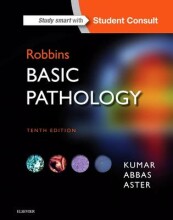Summary: Personalized Medicine Alles
- This + 400k other summaries
- A unique study and practice tool
- Never study anything twice again
- Get the grades you hope for
- 100% sure, 100% understanding
Read the summary and the most important questions on Personalized medicine alles
-
1 PCR
This is a preview. There are 1 more flashcards available for chapter 1
Show more cards here -
What is the goal of PCR?
Exponential amplification of specific target piece of DNA -
How does is work? (3 steps)
Monster -> DNA extractie
You need- DNA polymerase = taq polymerase
- primers
- template DNA
- nucleotides
Denaturation of thetemplate strand into single strandsAnnealing ofprimers (of specific target DNA) to eachoriginal strandExtension of the newDNA strand from theprimers with DNA-polymerase.
-
2 Sanger
This is a preview. There are 2 more flashcards available for chapter 2
Show more cards here -
What is the goal of sanger sequencing?
Determine the preciseorder of thenucleotides of a givenDNA fragment . -
What do you need for sanger seq?
- Primer
- DNA template
- DNA polymerase
- dNTP
- ddNTP (=stop)
- Primer
-
How do you separate DNA fragments on length and charge?
Gel electroforesis. -
What can you detect with sanger sequencing?What is an disadvantage of sanger?
Sanger sequencing is the gold standard method foraccurate detection of- single
nucleotide variants - small
insertions /deletions . - Not so well duplications
Disadvantage:
- only short parts of DNA
- Long parts => long time - single
-
3 NGS/wes
This is a preview. There are 3 more flashcards available for chapter 3
Show more cards here -
What is the goal of NGS?
One gene or a gene package sequencen -> finding the order of the nucleotides. -
So what is the difference with sanger?
- The length of the DNA sample: NGS is massively parallel, that is, sequencing millions of fragments simultaneously per run
- NGS is better in detecting small variants and rare mutations
- Higher discovery power
- Higher sensitivity
-
What is a problem with NGS/WES?
You sequence short elements => can lead to unneccecairy frame shift.
You need to realine the different parts => difficult with copy number variants (CNV). -
3.1 Variant analysis
This is a preview. There are 3 more flashcards available for chapter 3.1
Show more cards here -
So you found variant/mutations. What is next? What do you want to know?
Is there a gene-disease association Does this explain the pathogenic mechanism of the disease Inheritance: autosomal dominant, recessive, x-linked Prevalence , penetrance
- Higher grades + faster learning
- Never study anything twice
- 100% sure, 100% understanding
































